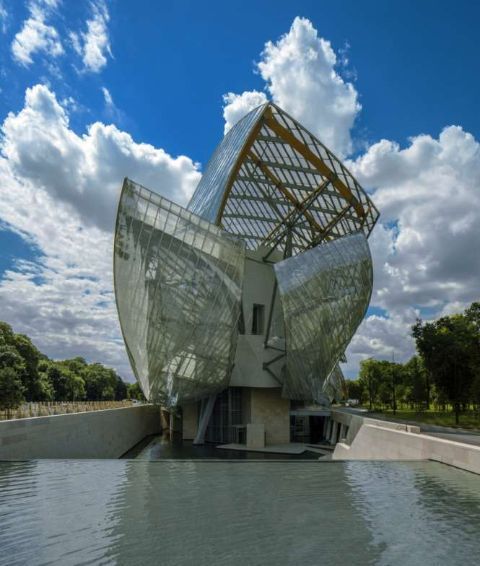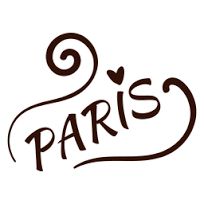
Many cities have walkable promenades but none perhaps as many s the City of Lights does. Paris (like New York) is a metropolis where one walks without realizing the distances covered. The sights are so many and so varied that one might find it easier to never step inside the underground metro and stay above to see as much as possible while walking.
Paris is quite flat, as far as buildings heights, so views can sometimes extend far far away without any concrete inference (unlike New York). Here are a few of my favorite walks in the city where I grew up and where I never stopped walking.
Off the beaten avenues.
While the obvious and famous destinations around Paris must include the Eiffel Tower, the Arch of Triumph, the Champs-Elysées, Notre-Dame Cathedral, Sacré-Coeur Basilica, Moulin Rouge, Butte Montmartre, and many museums such as Orsay, Le Louvre, Picasso, Pompidou and Quai Branly/Jacques Chirac - I want to discuss here more offbeat walks.
Not that they are secrets or hard to find, but simply more overlooked while as interesting as the classic paths followed by many visitors.
Discover the bohemian charms of Paris.
1/Parc des Buttes-Chaumont – Canal Saint Martin: the Buttes-Chaumont is the best park in Paris for panoramic views of the city, as the area sits on a hill around a lake with an island, waterfalls and grotto, rocky outcrops and display of natural trees and plants. Cotton candy and ice cream stands offer old-fashioned treats. The Parc des Buttes-Chaumont is a public park in the northeastern 19th arrondissement of Paris, an area typically not frequently stroll by tourists. With 61 acres of greens, it is the fifth-largest park in Paris.
The 3-mile canal Saint Martin was first opened in 1825, providing a connection between the Seine and l'Ourcq rivers. Dotted with barges and pleasure boats, the north end of the canal is the Bassin de la Villette waterway. In the past few years, the area has become a trendy hangout for Parisians, with many new restaurants and bars opening on the sides of Quai de Jemmapes and Quai de Valmy. Sundays and legal holidays, a part of the canal closes to car traffic. Lovely iron footbridges traverse the waters.
Heading north along the Canal, the twin Mk2 cinemas and the water sports that take place during August’s Paris Plages both offer cooling refuges from the heat in the summer. For a city sometimes lacking air condition, movie theaters are quite good at providing frigid air. Nearby is the 104, Paris’s other flagship cultural center, set in a former 19th-century funeral parlor.

Greens and ostrich and art.
2/Métro Les Sablons - Fondation Louis Vuitton: Jardin d’Acclimatation, musée, bois. Stop at the métro Les Sablons and start walking south towards the Jardin d’Acclimatation, crossing it while visiting it to reach the Fondation Louis Vuitton – you are now in the Bois de Boulogne. The garden/park was opened by Napoleon III at the height of the Second Empire as a botanical exhibition where plants and animals from France's ever-expanding exotic colonies could acclimatize and get used to gray, rainy skies.
The charming park has rides, animals, a little train, pony rides, splash painting, crèpes stands, trampolines; this is a must for visitors with little kids. When you are done with the enchanting garden, head on to the new museum in the park, the futurist-looking Fondation Louis Vuitton. The modern art center host works by Jean-Michel Basquiat, Jeff Koons, Olafur Eliasson, and many other.
Located in the 16th arrondissement of Paris, and opened in 2014, the architectural feast Fondation Louis Vuitton, built by Frank Gehry features 3,600 glass panels and 19,000 concrete panels on its alluring façade. By day or by night, the structure strikes an astonishing presence in the middle of (almost) nowhere, erupting in the landscape like a modern flag.
If you feel like more green, you can continue your walk deeper inside the 2090-acre woods (Bois) and discover within its boundaries the English landscape garden with several lakes and a cascade; the Pré-Catelan; the Jardin des Serres greenhouses; two tracks for horse racing, and the tennis stadium of the French Open tournament held each year.

The longest walk.
3/Rue de Rivoli: Le Louvre, les arches, Angelina, musée des Arts décoratifs, le Jeu de Paume, l’Orangerie, le Marais. If you start this walk at the Place de la Concorde, you will pass the Jeu de Paume museum; the Jardin des Tuileries; the Museum of Decoratif Arts; the Louvre Museum; continuing towards Chatelet, you can then turn slightly left and walk to the Marais area.
Rivoli street is a main artery in the center of Paris with lots of traffic. It is lined with stone arcades and boutiques overflowing on the wide sidewalks, giving it an air of bazaar. Shopping here is mostly for tourists items, but if you follow the Rue de Rivoli all the way to the Place de l’Hôtel de Ville, you will find the BHV – one of the biggest department stores in Paris where you’ll find fashions, home décor and everything and anything else!
One of my favorite tea houses is the Angelina. I like this walk because of the many museums and the straight line from Concorde to Marais.

There is so much more I wish to share but let’s just say that a full day at the Saint-Ouen flea market and another full one at the Villette Park would also be great walks.
Like Thomas Jefferson famously declared:
"A walk about Paris will provide lessons in history, beauty, and in the point of life."

Research for this story was helped by No Worries Paris, a photographic walking guide by Jerry and Janine Sprout, with text in English.
Questions / Comments – sidoniesawyer@gmail.com
Visit my website.
